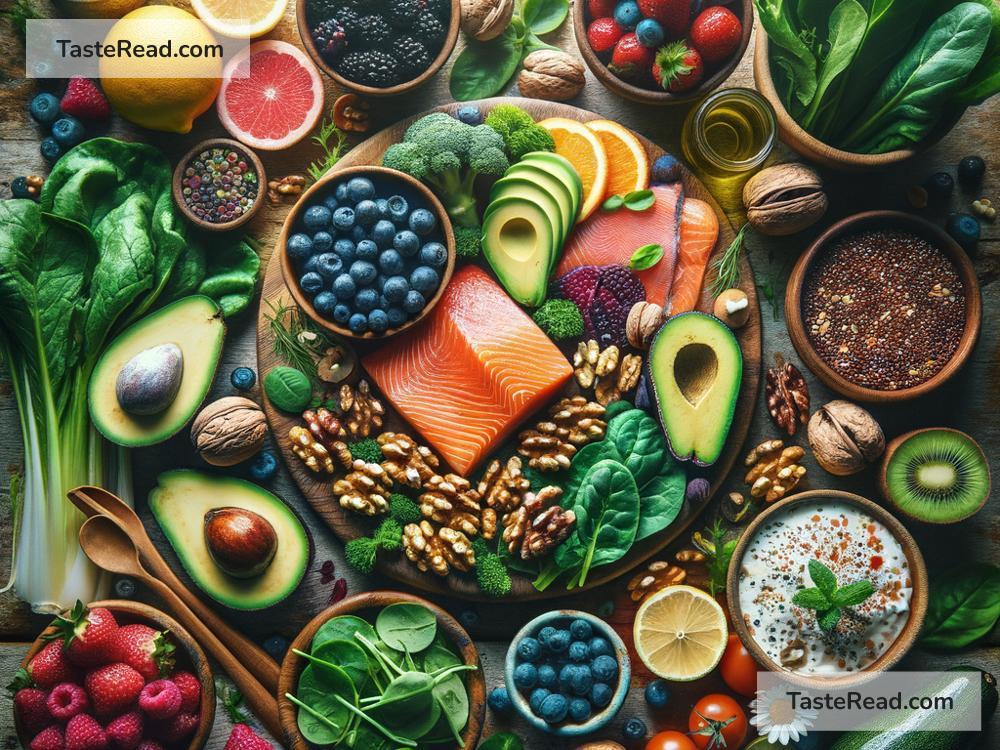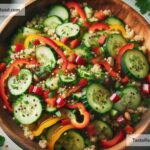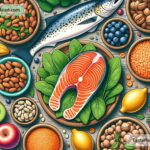Foods That Help Reduce Stroke Risk: Eat Your Way to Better Health
Strokes can be scary and life-changing, but the good news is that eating the right foods can lower your risk of having one. A stroke happens when blood flow to your brain is interrupted, either by a blood clot (ischemic stroke) or bleeding in the brain (hemorrhagic stroke). Luckily, science has shown that certain foods can help keep your heart and blood vessels healthy, making strokes less likely. Let’s dive into the foods that can protect your brain and body.
1. Fruits and Vegetables: Nature’s Medicine
Fruits and vegetables are packed with vitamins, minerals, antioxidants, and fiber—all essential for good health. Eating plenty of these colorful foods can lower your blood pressure and reduce inflammation, two major risk factors for strokes.
- Leafy greens like spinach, kale, and broccoli are rich in potassium and magnesium, which help regulate blood pressure.
- Berries such as blueberries, strawberries, and raspberries are loaded with antioxidants that protect your blood vessels.
- Citrus fruits like oranges, lemons, and grapefruits contain vitamin C, which reduces the risk of strokes.
- Tomatoes are high in lycopene, an antioxidant linked to better heart and brain health.
Aim for at least five servings of fruits and vegetables every day. The more colorful your plate, the better!
2. Whole Grains: Energy for Your Heart
Whole grains are healthier than refined grains because they keep all their nutrients and fiber. Fiber helps lower cholesterol levels, which can prevent blockages in your arteries that may lead to a stroke.
- Foods like oatmeal, brown rice, quinoa, and whole wheat bread provide steady energy without spiking your blood sugar.
- Studies show that eating three servings of whole grains daily can reduce stroke risk by up to 25%.
Replace white bread and rice with their whole-grain versions to keep your heart and blood vessels in good shape.
3. Fatty Fish: Brain Boosting Omega-3s
Fatty fish like salmon, mackerel, tuna, and sardines are rich in omega-3 fatty acids. These healthy fats can lower inflammation, decrease blood clot formation, and reduce harmful triglycerides in your blood.
The American Heart Association recommends eating fatty fish at least twice a week. If you’re not a fan of fish, you can get omega-3s from flaxseeds, walnuts, or chia seeds, though fish offers the most effective source.
4. Nuts and Seeds: Snack Smart
Nuts and seeds are small but mighty when it comes to heart health. They’re full of healthy fats, protein, fiber, and important nutrients like magnesium.
- Almonds, walnuts, pecans, and pistachios can reduce bad cholesterol.
- Chia seeds, sunflower seeds, and pumpkin seeds support healthy blood pressure.
While nuts are healthy, they are also high in calories. Stick to a handful a day to avoid overdoing it.
5. Healthy Oils: Cook Wisely
The type of fat you consume matters. Replace unhealthy fats like butter and margarine with healthier options.
- Extra virgin olive oil is one of the best choices for cooking and salad dressings. It’s rich in monounsaturated fats, which are great for your heart.
- Avocado oil is another good option.
Avoid trans fats and limit saturated fats, as they can clog your arteries and increase stroke risk.
6. Legumes: Plant-Based Powerhouses
Beans, lentils, and chickpeas are excellent sources of plant-based protein, fiber, and nutrients. Eating more legumes can lower cholesterol and help control blood sugar levels.
Add lentils to soups, black beans to salads, or hummus to your snacks for a brain-friendly boost.
7. Low-fat Dairy: Strong Bones, Healthy Heart
Low-fat dairy products like Greek yogurt, skim milk, and low-fat cheese contain calcium and vitamin D, which help manage blood pressure. However, avoid full-fat dairy, as it contains more saturated fats that may harm your heart.
Try adding yogurt to your breakfast or a small piece of low-fat cheese as a snack.
8. Dark Chocolate: A Sweet Treat
Yes, you read that right—dark chocolate can be good for you! Dark chocolate contains flavonoids, which are antioxidants that improve blood flow.
Choose chocolate that’s at least 70% cocoa and eat it in moderation (one or two small squares a day). Avoid products loaded with sugar and artificial ingredients.
9. Green Tea: Sip for Your Brain
Drinking green tea can lower your risk of strokes thanks to its antioxidants. Green tea also helps improve blood vessel function and reduces cholesterol.
Replace sugary drinks with green tea for a refreshing and health-friendly option.
10. Limit Sodium and Processed Foods
While adding heart-healthy foods is important, cutting out harmful ones is just as essential. Processed foods, fast food, and salty snacks are loaded with sodium, which raises your blood pressure and increases stroke risk. Choose fresh, whole foods instead.
Final Thoughts
There’s no magic food that can guarantee you’ll never have a stroke, but filling your plate with healthy, nutrient-rich options can drastically reduce the chances. Focus on fruits, vegetables, whole grains, fatty fish, nuts, and seeds. Pair these with regular exercise, stress management, and plenty of water for a well-rounded stroke-prevention plan.
Remember, small changes make a big difference. Start with one or two of these foods and slowly add more to your routine. Your brain and heart will thank you for it!


